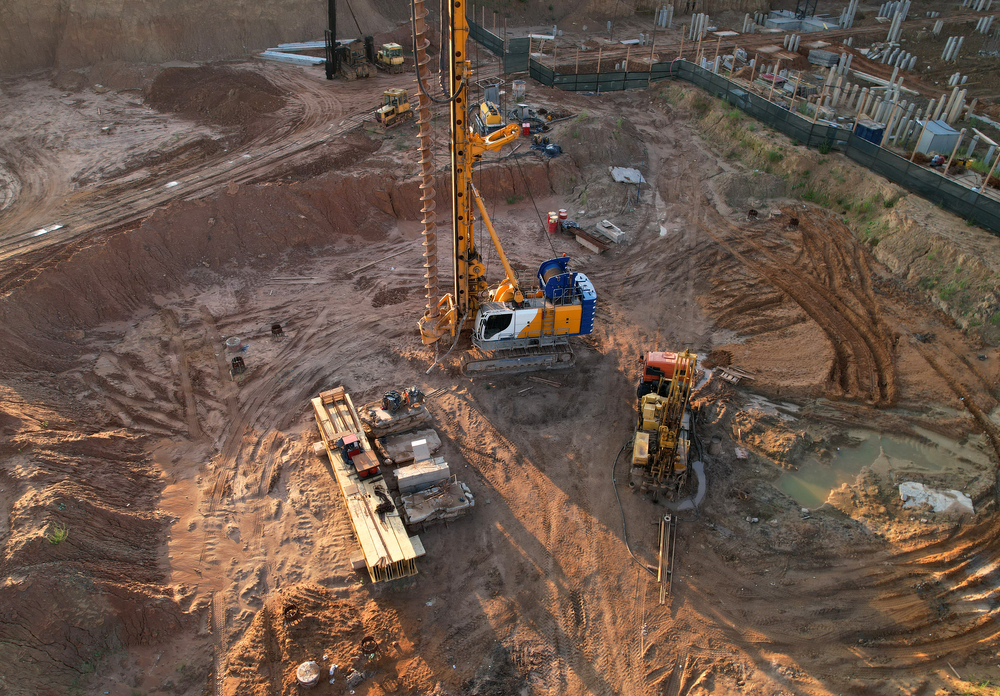The Of Geotheta
The Of Geotheta
Blog Article
The Only Guide for Geotheta
Table of ContentsGeotheta Things To Know Before You Get ThisThe Basic Principles Of Geotheta The Of GeothetaUnknown Facts About GeothetaSee This Report about Geotheta

They perform website investigations, accumulate examples, perform research laboratory examinations, and evaluate data to evaluate the viability of the ground for building and construction tasks - Geotechnical Engineers. Based on their searchings for, geotechnical engineers give referrals for foundation style, slope stability, retaining structures, and mitigation of geotechnical dangers. They work together with various other professionals, such as architects, architectural engineers, and building and construction groups, to ensure that geotechnical factors to consider are integrated right into the total task design and implementation
By examining the behavior and residential or commercial properties of soil and rock, they can determine potential geotechnical dangers such as landslides, dirt negotiation, or slope instability. Their know-how aids protect against failings or mishaps that can endanger lives and residential property. Below are some comprehensive obligations and responsibilities of a geotechnical engineer: Website Investigation: Geotechnical engineers conduct site examinations to gather information on subsurface problems.
They analyze the information to recognize the properties and behavior of the soil and rock, including their strength, permeability, compaction characteristics, and groundwater problems. Geotechnical Analysis and Layout: Geotechnical engineers assess the information collected during site examinations to evaluate the stability and viability of the site for building and construction jobs. They perform geotechnical computations and modeling to examine aspects such as birthing ability, settlement, incline security, lateral planet pressures, and groundwater flow.
The 8-Minute Rule for Geotheta
Foundation Style: Geotechnical designers play a critical function in making foundations that can safely sustain the intended structure. They analyze the soil problems and tons demands to identify the appropriate foundation type, such as superficial foundations (e.g., footings), deep structures (e.g (https://pxhere.com/en/photographer/4325446)., heaps), or specialized methods like dirt improvement. They think about aspects such as settlement limits, birthing ability, and soil-structure interaction to create optimal structure styles
They assess building and construction strategies, display site activities, and carry out field assessments to verify that the layout suggestions are complied with. If unforeseen geotechnical problems emerge, they analyze the scenario and supply referrals for removal or adjustments to the style. Danger Assessment and Mitigation: Geotechnical designers assess geotechnical risks and dangers related to the project site, such as landslides, liquefaction, or soil disintegration.

Cooperation and Communication: Geotechnical designers function carefully with other experts associated with a project, such as architects, structural engineers, and construction teams. Effective communication and partnership are vital to incorporate geotechnical considerations right into the total task layout and construction process. Geotechnical designers provide technical experience, response queries, and ensure that geotechnical needs are fulfilled.
An Unbiased View of Geotheta
Here are some kinds of geotechnical designers: Foundation Designer: Foundation engineers concentrate on making and analyzing foundations for frameworks. They evaluate the dirt conditions, load demands, and site characteristics to identify the most appropriate foundation type and layout, such as superficial structures, deep structures, or specialized techniques like stack structures.
They assess the elements influencing slope security, such as dirt buildings, groundwater conditions, and slope geometry, and establish methods to avoid incline failings and mitigate threats. Quake Designer: Earthquake engineers focus on examining and creating structures to hold up against seismic pressures. They evaluate the seismic risk of a website, evaluate soil liquefaction capacity, and establish seismic style criteria to guarantee the security and durability of structures during earthquakes.
They carry out field screening, gather samples, and analyze the gathered data to characterize the dirt buildings, geologic developments, and groundwater conditions at a website. Geotechnical Instrumentation Designer: Geotechnical instrumentation engineers concentrate on tracking and determining the behavior of dirt, rock, and frameworks. They install and preserve instrumentation systems that keep an eye on variables such as dirt settlement, groundwater degrees, slope motions, and architectural displacements to analyze efficiency and supply early warnings of potential issues.
Geotheta Can Be Fun For Anyone
They carry out examinations such as triaxial tests, combination tests, direct shear examinations, and leaks in the structure tests to gather data for geotechnical evaluation and design. Geosynthetics Designer: Geosynthetics designers specialize in the design and application of geosynthetic products, such as geotextiles, geogrids, and geomembranes. They use these materials to enhance soil security, strengthen inclines, provide drainage options, and control erosion.
They often tend to be investigatory individuals, which means they're intellectual, introspective, and investigative. They wonder, methodical, sensible, analytical, and rational. A few of them are likewise social, suggesting they're kind, generous, cooperative, person, caring, practical, empathetic, tactful, and friendly. Does this noise like you? Take our cost-free profession test to discover if geotechnical engineer is one of your top occupation suits.
In the office atmosphere, geotechnical designers utilize specialized software tools to perform computations, produce designs, and assess information. They prepare reports, evaluation task requirements, connect with clients and group participants, and coordinate job activities. The office setup supplies a conducive setting for study, analysis, and partnership with various other specialists included in the project.
The Best Strategy To Use For Geotheta
They frequently go to project sites to perform site examinations, assess geotechnical problems, and collect information for evaluation. These check outs include taking a trip to various areas, sometimes in remote or difficult terrains. Geotechnical designers may do dirt sampling, conduct from this source tests, and monitor construction activities to make sure that the geotechnical facets of the job are being carried out correctly.
Geotechnical designers also operate in specialized geotechnical laboratories. In these facilities, they perform experiments, carry out examinations on dirt and rock samples, and evaluate the design buildings of the materials. Geotechnical lab designers work thoroughly in these environments, managing screening equipment, running tools, and tape-recording information. They team up with other lab personnel to guarantee precise and trusted screening results.
Report this page